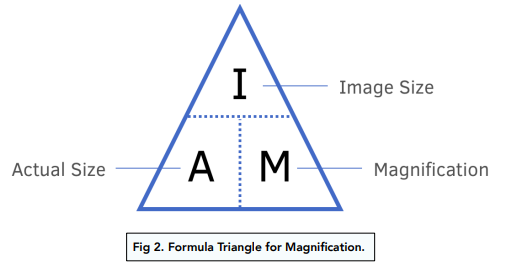Organisation + Movement into and out of cells + Biological molecules + Enzymes
1/35
There's no tags or description
Looks like no tags are added yet.
Name | Mastery | Learn | Test | Matching | Spaced |
|---|
No study sessions yet.
36 Terms
cell, tissue, organ, organ system
cell - basic functional & structural units of a living organism
tissue - group of cells with similar structures working together to perform a shared function
organs - made of different tissues working together to perform specific functions
organ system - groups of organs with related functions, working together to perform body functions
organelles of an animal cell
nucleus - contains genetic material and controls cell functions
mitochondria - place where aerobic respiration takes place in a cell
cytoplasm - where anaerobic respiration takes place. jelly like substance. site of most chemical reactions in the cell
ribosome - place where protein synthesis takes place
cell membrane - separates cell from surroundings. controls movement of substances in and out of the cell. keeps content of cells inside
plant cell organelles (extra)
cell wall -made of cellulose and gives support to the plant cell and is rigid and inelastic.
chloroplast -contains the green pigment chlorophyll. it is the place where photosynthesis takes places. absorbs light energy for photosynthesis. chlorophyll transfers energy from light into energy in chemicals, for the synthesis of carbohydrates
permanent vacuole - contains cell sap and is used for storage of water & mineral ions. also helps support cell shape by exerting a pressure
* plant cells often have chloroplasts, animal cells do not
* plant cells have a regular shape, whilst animal cells are often in irregular shape
* plant cells often have large vacuoles, animal cells only have small vacuoles
how are new cells made
by division of existing cells
trachea and bronchi
(b) root hair cells – absorption
(c) palisade mesophyll cells – photosynthesis
(d) neurones – conduction of electrical impulses
(e) red blood cells – transport of oxygen
(f) sperm and egg cells (gametes) – reproduction
root hair cells - near the ends of plant roots
xylem vessel cells - in the stems, roots, and leaves
palisade mesophyll cells - underneath the epidermis of the leaf
nerve cells - throughout the bodies of animals
red blood cells - the blood vessels of animals
sperms and eggs - testes and ovaries
\
mm to micrometre. 1mm = 1000 micrometres. so x1000

factors that influence diffusion
surface area - the larger the SA, the higher the rate of diffusion. cuz more molecules at a given time will be diffusing
temperature - the higher the temp, the higher the rate of diffusion. this is because molecules move faster and have higher kinetic energy
concentration gradient - the higher the concentration gradient, the faster the rate of diffusion
Distance - the shorter the distance, the quicker the rate of diffusion. The shorter the distance particles must diffuse and move across, the faster diffusion is going to be.
roles of water in organisms
transport, digestion, excretion
Water is the universal solvent, many substances dissolve in it.
what happens when add a cell to a dilute solution AKA hypotonic solution
there is a higher water potential outside the cell, than inside the cell. this means water will move inside the cell. as water enters the cell, the cell becomes turgid (swells) until eventually the strain is too much and the cell burst. lysis occurs
\
a plant cell does not burst, for it has a cell wall. (the cell wall is fully permeable btw)
what happens when you add a cell to a concentrated solution AKA hypertonic
the cells shrink and become flaccid.
plants are supported by?
pressure exerted by a fluid in a cell that presses the cell membrane against the cell wall - turgor pressure
role of water in plants
water is important because it transport mineral ions and nitrate ions.
the water maintains the turgidity of the cell
prevent wilting
medium for enzyme action
particles through a cell membrane from a region
of lower concentration to a region of higher
concentration (i.e. against a concentration
gradient), using energy from respiration
Importance of diffusion and active transport
Diffusion: Gas exchange for respiration, removal of waste products such as CO2.
Active Transport: Uptake of glucose by villi
Uptake of glucose by kidney tubules in nephron.
Uptake of ions from soil.
* fats
* protein
what are carbohydrates, proteins and lipids made up of?
Glucose, glycogen and cellulose are made from glucose
Proteins are made from amino acids.
Fats and oil are made of fatty acids and glycerol. One glycerol molecule is chemically bonded with three fatty acid chains.
structure of DNA
two strands coiled together to form a double helix
(b) each strand contains chemicals called bases
(c) bonds between pairs of bases hold the strands together
(d) the bases always pair up in the same way: A with T (adenine and thymine), and C with G (cytosine and guanine)
enzyme
proteins that are involved in all metabolic reactions, where they function as biological catalysts
lock & key theory
substrate fits into enzyme
because shape of substrate is complementary to the enzyme’s active site
this forms an enzyme-substrate complex
products are formed and substrate leaves enzyme
enzyme remains unchanged
how does temperature affect enzyme active
As temperature rises, the rate of enzyme activity increases. Molecules (including enzymes) have more kinetic energy and move faster. More collisions between enzyme and substrate per second/frequency of effective collisions increases.
how does an enzyme get denatured
If the temperature is too high, enzymes denature. The active site changes shape. This prevents binding of substrate/substrate can no longer fit into enzyme's active site.
why r enzymes important?
Enzymes reduce the activation energy of a reaction.
The increase the rate of a chemical/metabolic reaction.
The reaction can occur at lower temperatures.
Enzymes are biological catalysts.
Without enzymes reactions occur too slowly.
They provide their active site for the reaction.